Knives Buying Guide
Any time you’re looking to upgrade your skills in the kitchen, you’ll need to evaluate whether your knives are up to the task. But if a casual look at the extremely wide variety of knives available gives you a headache, I understand!
Even after over a decade working in restaurants and bars, I learn something new about knives every day. And I’m especially thankful for the unique experience of combining that knowledge with the expert opinions of the other chefs, writers, and researchers here at Kitchen Ambition.
Together, we’re building one of the most comprehensive kitchen knife resources available online. So think of this guide as your one stop shop for the essentials you need to know before buying your next kitchen knife. From each main topic, we’ll link through to more in-depth guides for further exploration.
But hey, if you don’t quite have the time for that — I get it. Pop on over to our guide to the essential kitchen knives any at-home chef should have.
What Are The Best Kitchen Knives?
Get the right tools for your kitchen, add a little trial and error, and you’ll be able to make any recipe you want.
But the right knife for your kitchen will depend on a few things, like your style of cooking, level of experience, and budget for kitchen tools.
In this section, I’ll touch on some of the most important personal considerations you should keep in mind before finding the best kitchen knives for you, including the most important questions to ask before buying a knife.
How Do You Cook?
Beginners to home cooking will have the easiest time choosing a kitchen knife. If you haven’t developed a particular style and don’t yet cook from a specific cuisine, a basic set of knives is the way to go. Give yourself a chef’s knife and a paring knife to start with, and you’ll be set to cook 90% of recipes and learn the basic knife cuts.
If you already have a preference for either Western or Eastern cuisines, though, your choice of kitchen knives should reflect that. For example: The ultra-thin blades of Japanese knives make them better suited to making precise cuts on delicate fish. But a heavier-handled German knife will give you more weight for breaking down chicken, pork, and beef.
Lastly, how good are your knife skills? The design of a given blade will make it better at certain types of knife cuts. If you’re already practiced with the Western-style rocking motion, stick with a Western blade. But if you’re open to learning a new skill, the Japanese-style push and pull cut can give impressively clean results.
Sets Vs. Individual Knives
Go to any home goods store, and you’re likely to see a fancy display of shiny new knives. Most often sold together with a block for storage, these knife sets may lead you to think: Wouldn’t it be easier to just get everything at once? Well, yes and no.
Oftentimes, knife sets from less-recognized brands are just a way to sell you a bunch of knives you don’t need. They’ll include redundancies, like three sizes of utility knives, to make the set look more impressive. These types of sets should be avoided at all costs.
It’s a different story if you look for a knife set from a recognized brand like Wusthof, Shun, or Zwilling. They take special care to make their knife sets an actual deal, and you’ll get the knives for less than buying them individually.
But here’s the final consideration: Do you need all of those knives? For most people, the answer is no. If your kitchen knife collection is just getting started, it’s usually better to invest in a single, top-quality knife at a time. That said, if you already know that you love a certain brand’s knives, a knife set can offer significant savings.
Forged Vs. Stamped
What’s the most important quality in a kitchen knife? In my experience, it’s the construction of the blade. Without a well-made blade, no other detail can make a kitchen knife worth using.
So what qualifies as a well-made blade? If you’re looking for the best kitchen knife, not just one that will work for a while, you need a forged blade.
Forged blades are carefully handcrafted from a single piece of steel, folded, and tempered in a painstaking process. As a result, they’re sharper, more durable, and keep an edge longer. Because they take more time and attention to make, they’re also pricier.
A stamped blade, in contrast, is punched out of a piece of steel. Because it hasn’t been folded, tempered, and processed, a stamped blade will never be as high quality as a forged blade. They’re much less expensive, but in my experience, stamped blades cause more trouble than they’re worth.
A Sharp Knife Is A Safe Knife
The sharper a knife is, the safer it is to use. For beginners, that may seem counterintuitive. Wouldn’t a dull knife have less chance of cutting you?
Not at all. The majority of knife accidents in the kitchen come from dull and poorly cared for knives. Because you’ll have to apply more pressure for each cut, the chance of slipping and cutting yourself rises starkly.
Contrast that with a razor-sharp knife. That same cut that a dull blade struggled through? A freshly sharpened knife will slice through smoothly, without resistance.
How do you know if your knife is sharp? Try folding a piece of paper in half, standing it up on your counter, and cutting it from top to bottom. If your knife struggles through that — or can’t even start the cut — it definitely needs to be sharpened.
If your knife can’t pass the paper test, you’ll need to decide whether to sharpen it yourself or take it to a professional. You can learn how to sharpen kitchen knives from our guide, or find a knife sharpening service in your area. They’ll usually charge about $2 per inch of blade that needs sharpening.
Care And Maintenance
Taking care of your knives really comes down to two things: Keeping them clean and dry, and storing them safely.
First, no quality knife should ever be put in a dishwasher. The high temperatures can damage both the blade and the handle, and reduce the longevity of the knife. Hand wash only, please. And while you’re at it, always dry your knife with a towel promptly after washing it. That will prevent any possibility of corrosion or staining.
You’ll also want to invest in some sort of knife storage solution for your kitchen. That could be individual sheaths, a knife block, a magnetic rack, in-drawer storage, or a knife bag. Our guide to knife storage solutions goes into each option in further detail.
Cutting Boards
Last but not least: You’ll need something to cut on! Quality knives need wooden cutting boards to accompany them. Avoid glass, ceramic, or granite cutting boards — they’ll all quickly dull or damage your knife’s edge.
German Vs Japanese Knives
Once you’re committed to buying the best knives for your kitchen, you’ll have a big choice to make. Should you go for a German knife, or a Japanese knife?
Both countries have a decades-long tradition of knife making, and each origin offers its own benefits and downsides. Let’s explore each in more detail.

German Knives
Solingen is Germany’s “city of blades” — the epicenter of Germanic knife-making tradition. German knives are made with a fairly thick blade and heavier handle, and use softer steel than Japanese knives. This makes them more durable and less prone to chipping, and therefore better for processing large cuts of meat. Unfortunately, it also means that German blades will never be quite as sharp as Japanese ones.
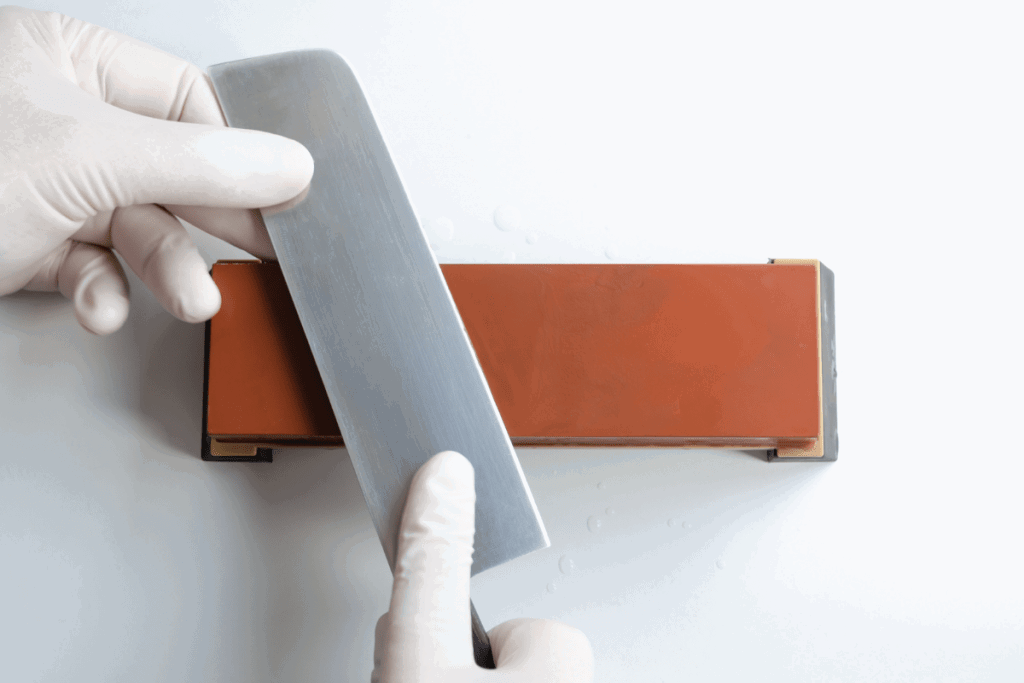
Japanese Knives
Seki is Japan’s “city of blades”, with a heritage that started in the days of the samurai. This sword-making tradition greatly influences Japan’s knives, which have thinner blades, harder steel, and lighter handles than German knives. This makes them incredibly sharp and capable of making precision cuts. But it also makes Japanese knives more prone to damage, including chips in the blade edge from running into bone.
Which Is Better?
Really, you can’t go wrong with a German or a Japanese knife from a recognized brand. But in my experience, German knives are better for beginners. Their softer steel is more forgiving, and the heavier construction helps to make large cuts less difficult. As you develop more knife skills, though, the incredible sharpness and precision of Japanese knives make them a more appropriate tool.
Best Knife Material
One of the biggest decisions for a knife maker is the type of steel that their blades will be made of. And while marketers will try to convince you that there’s one “best” type of blade, any steel has both pros and cons.
To get a better feel for this, I’d like to introduce you to the Rockwell scale. In brief, the Rockwell scale is a measure of how hard a metal is. Great blades start around a Rockwell hardness of 56, with the hardest blades measuring as much as 60 or more on the scale.
With this measure of hardness, there’s a big tradeoff. Blades with a lower rating will be more flexible (and therefore less brittle), and less prone to chipping. Those on the higher end of the scale will be incredibly sharp, but brittle and more prone to damage.
With that in mind, let’s look at the most notable materials used for making knives:

Carbon Steel
Carbon steel blades are on the hardest end of the Rockwell scale. They make for the sharpest and most precise knives, but require greater skill to use well. Both German and Japanese producers use high carbon steel for their best knives.
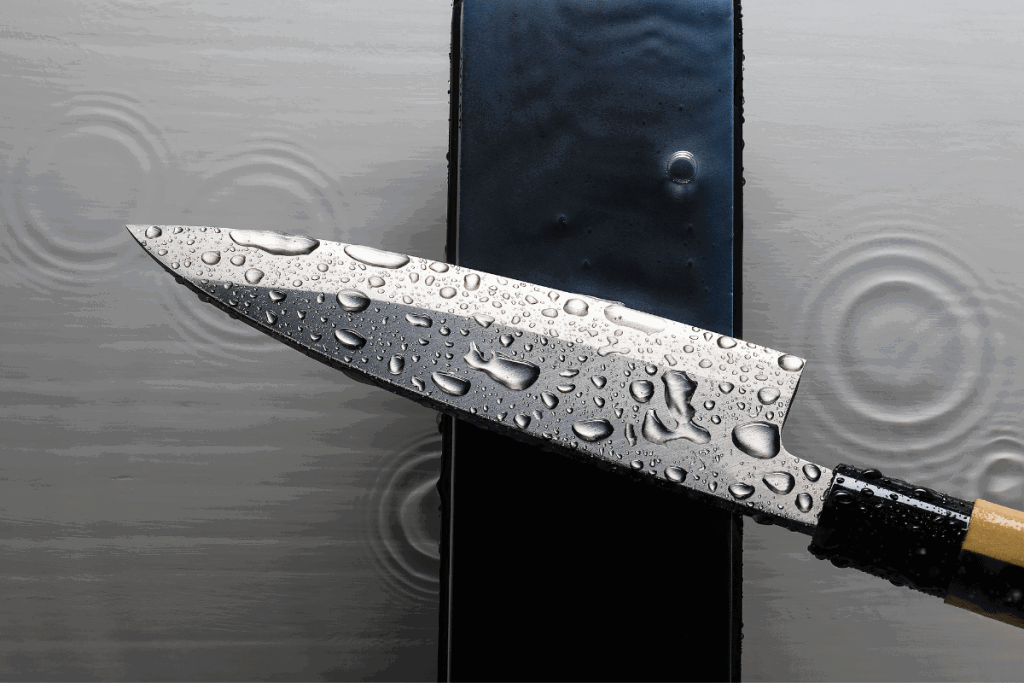
Damascus Steel
Japanese sword makers invented the Damascus steel process of continually folding high- and low-carbon steels together. Used for kitchen knives, the resulting blades have a fine balance of sharpness and flexibility. They are also consistently some of the most expensive knives you’ll find.
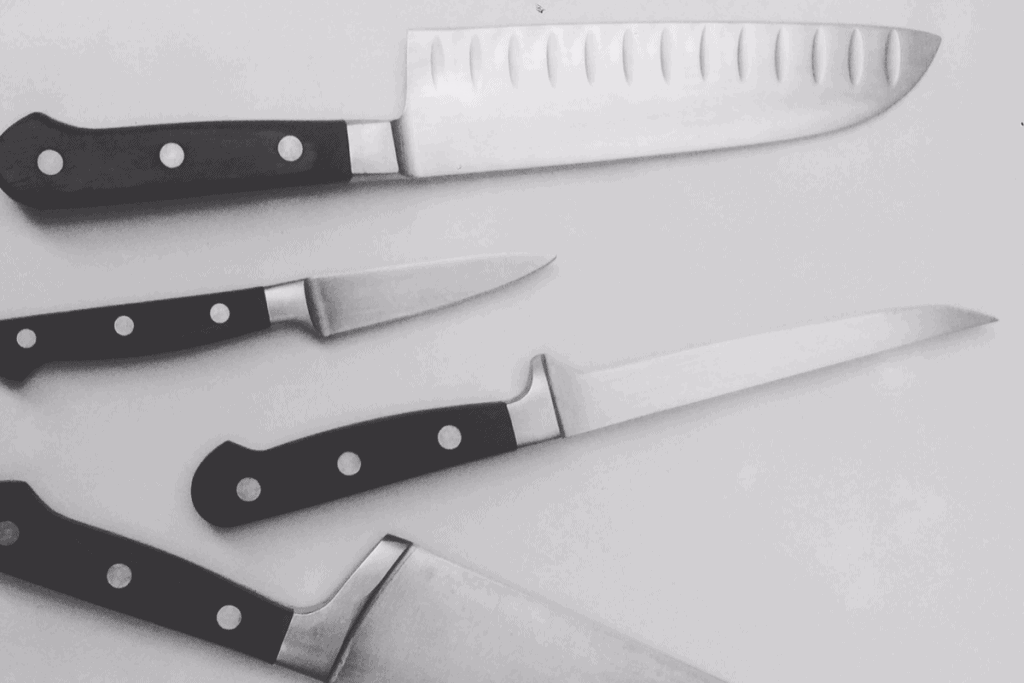
Stainless Steel
Good old stainless steel has been the metal of choice for kitchen knives for decades. And while most stainless steel blades can’t reach the same sharpness as high carbon steel, they’re still entirely viable for knife making. If you need a good-quality knife on a small budget, stainless steel is the way to go.
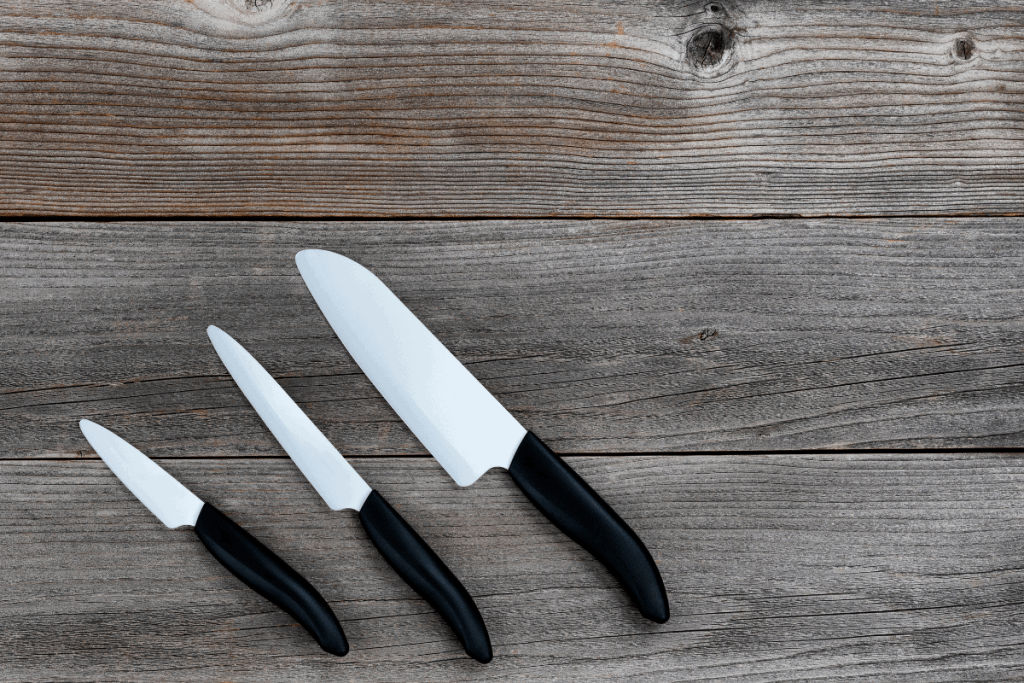
Ceramic
A relative newcomer to the knife world, ceramic knives have caught the eye of budget-conscious home cooks. Fresh out of the box, they’re exceptionally sharp — and extremely affordable. Professional chefs tend to avoid them, though, as they are difficult to sharpen and not nearly as durable as steel knives.
Parts Of A Knife
To really develop your knowledge and experience, you’ll need to pay careful attention to the design of every part of a knife. The blade, handle, and bolster are the foundation of a knife’s function, and the tang is what brings everything together. Let’s take a closer look at what you need to know about each of them:
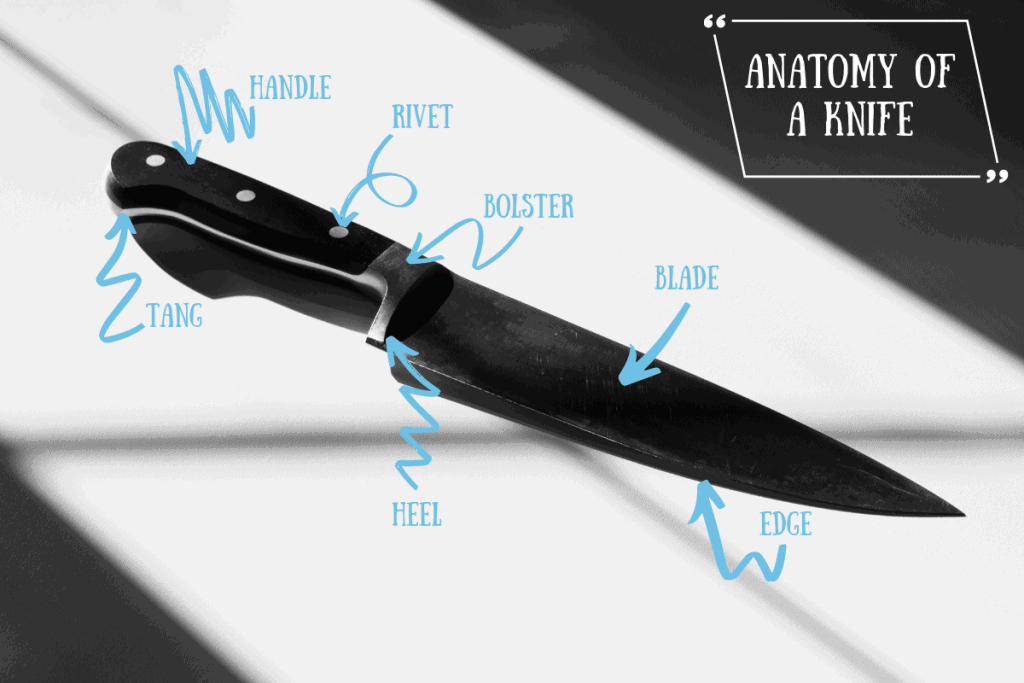
Blade
Think of a knife, and the style of the blade is the first thing that comes to mind. At a basic level, every knife’s blade is defined by three things: Its size, its shape, and the type of edge it has.
When you’re thinking about buying a knife, you can use those three things to compare knives that are in the same category (e.g. chef’s knives, paring knives, bread knives). This will help you hone in on the exact specifications you’re looking for in a knife.
Handle
Your knife’s handle provides three important qualities: Balance, grip, and comfort.
For balance, look for handles made from either from natural hardwoods, or dense polymer synthetics. Either of these materials also provides a slip-resistant grip that helps to prevent unfortunate accidents.
A knife handle’s comfort is almost entirely a matter of personal preference, though. For example: While the D-shaped handles of some Japanese knives are very comfortable for me, I have chef friends who swear by the molded handles of Wusthof’s Classic series.
If you can, take the time to test a variety of knife handles in person so you know which ones are comfortable for your hands.
Bolster
Sandwiched between the blade and the handle is a knife’s bolster. It can add both weight and protection to a knife, and prevent your lead finger from slipping onto the back edge of the blade.
A full bolster provides the most weight and protection, but also makes it harder to use the full length of your blade. That’s why my preference is for a half bolster, also known as a sloped bolster. It gives a degree of protection and just enough weight for a fine balance, but still lets you use the full length of your blade. Knives made with no bolster forego the added metal altogether, making for a lightweight blade with excellent maneuverability but no protection.
Tang
The tang of a knife is a description of how far the metal of the blade extends into the handle.
Full tang knives have one piece of steel that extends from the tip of the blade through the butt of the handle. This provides the most durable and long-lasting construction of any knife design, at the cost of a heavier weight.
The steel of semi tang knives stops partway into the handle. This allows the knife maker to produce a lighter weight tool, at the cost of some durability.
Knives with no tang are almost always the cheapest and least durable you’ll find. I cannot recommend buying a knife with no tang, as it will inevitably break at the handle juncture.
Types Of Kitchen Knives
Every type of kitchen knife is designed to be the best at a specific cutting task. So if you’re looking to have the widest range of recipes available to you, eventually you’ll want to build a collection of kitchen knives.
What follows are the types of knives you may want to use in your home kitchen. If you’d like to learn more about a specific style, click on our in-depth guides!
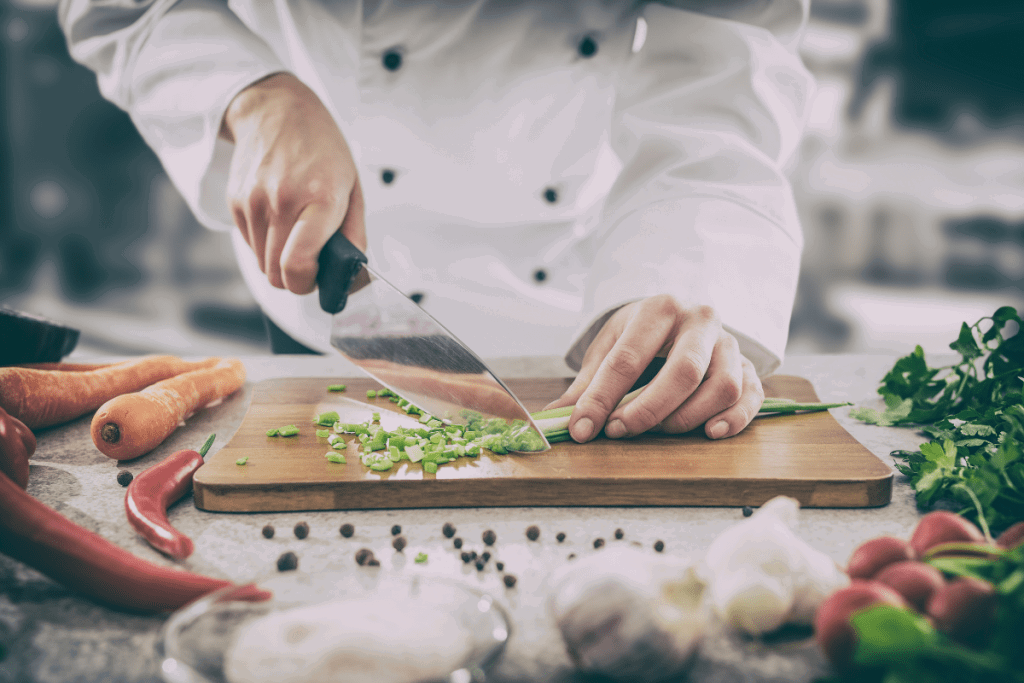
Chef Knife
Every cook needs a chef’s knife — it’s the workhorse of both professional and home kitchens. You’ll use a chef’s knife for at least 80% of your cuts, so investing a little extra here is a wise move. They’re not well suited to detailed work like peeling fruits, and aren’t used for cutting bread, either.

Paring Knife
The small and nimble paring knife is a trusty companion to the chef’s knife, and the second knife you should get for your kitchen. It takes care of the detailed, precision-oriented cuts that chef’s knives can’t. Of course, you can’t use these petite knives for larger cuts on meat and vegetables.
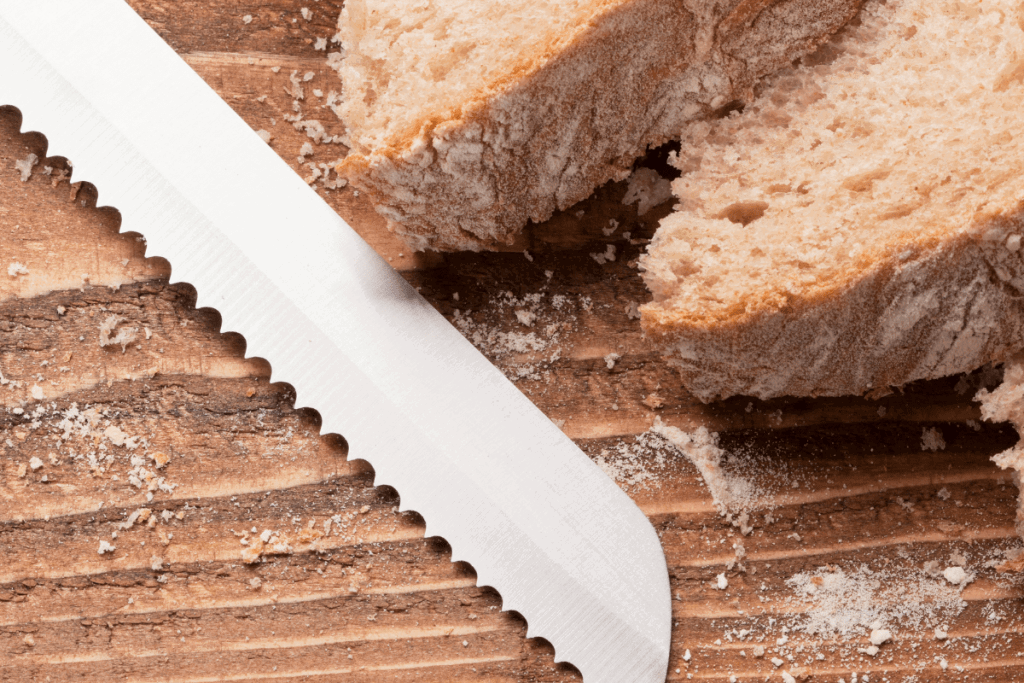
Bread Knife
Even if you don’t bake fresh bread often, the serrated bread knife is a useful addition. They excel at cutting bread, of course, but can also be used to cut tomatoes or carve a roast in a pinch. Leave the smooth, regular cutting to your other knives, as the serrated edge makes ragged cuts.
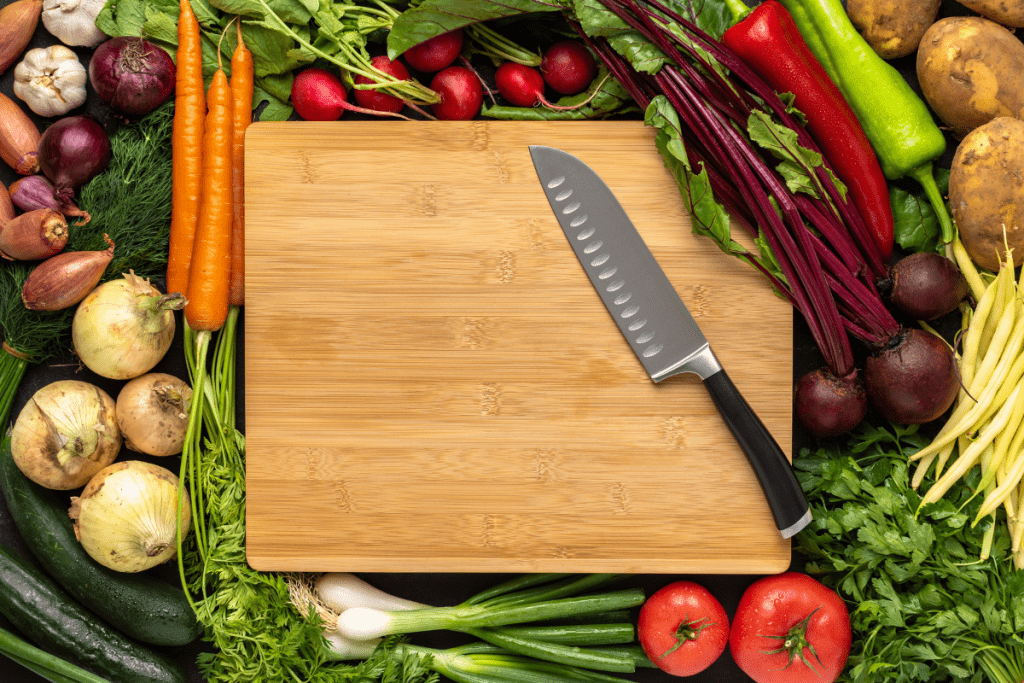
Santoku
Translated as “three virtues”, the santoku is a wonderful all-purpose knife for the at-home chef. It’s slightly smaller than a chef knife, but can still handle all of your meat, fish, poultry, and vegetable prep. A true jack of all trades knife.

Meat Cleaver
The toughest kitchen jobs require the most heavy-duty knife: The Cleaver. These large, imposing knives are the first step in breaking down whole animals, making them a natural choice for hunters’ kitchens. Look also for the Chinese cleaver that can double as a chef’s knife.

Nakiri
Japan’s cuisine has a heavy focus on vegetables, so it’s natural that they would have a knife made especially for veggies! That’s the nakiri: A thin-bladed knife that works wonders on carrots, green onions, garlic, potatoes, and more. Just don’t use them for cutting anything with bones – the thin blades are fragile.

Carving
Most holidays wouldn’t be the same without a big roast in the center of the table. And if you want to make beautiful slices from that roast, you’ll need a carving knife. They’re long, thin, and lightweight, with a point that lets you maneuver around bones and cartilage.
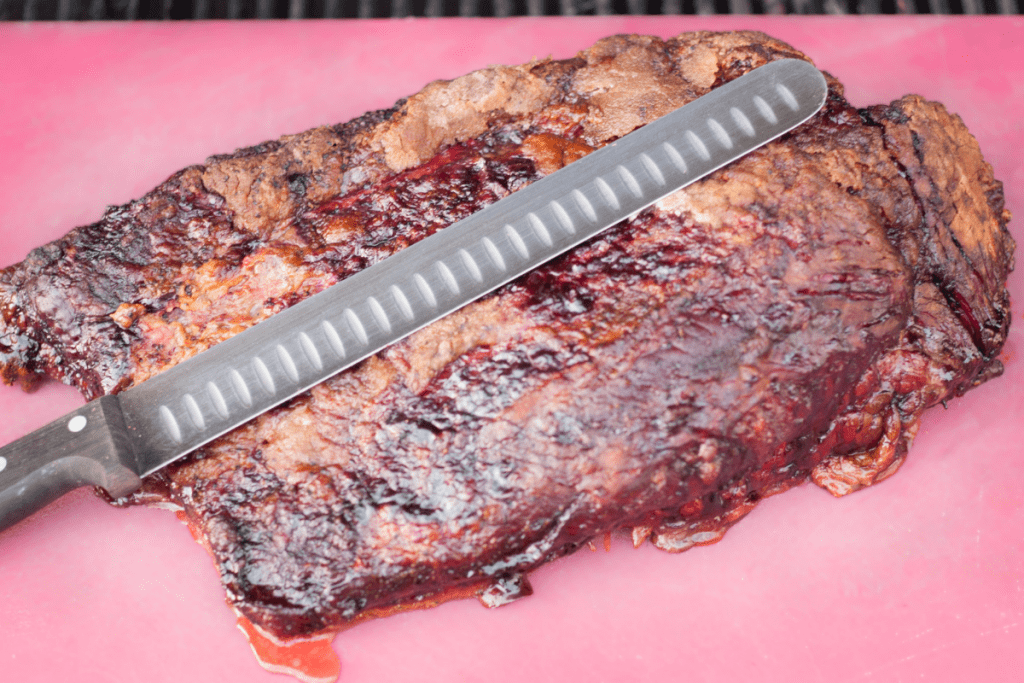
Slicing
Similar to the carving knife, a slicing knife is a long, thin, lightweight knife designed to handle large cuts of meat. The Granton edge on a slicing knife makes it easier to cut without the knife getting stuck, making this style perfect for preparing barbecue and cold cuts.

Fillet
Working with fish requires a delicate hand and the right type of knife. Fillet knives are extra sharp and flexible, and the blade edge slopes to an aggressive point. This lets you get under a fish fillet’s skin and around the small pin bones, creating picture-perfect fillets.

Boning
The secret weapon of thrifty home cooks, a boning knife will let you break down whole cuts of meat and poultry. Compared to the already-prepared cuts you get from the store, these home-prepared meats will be much more affordable
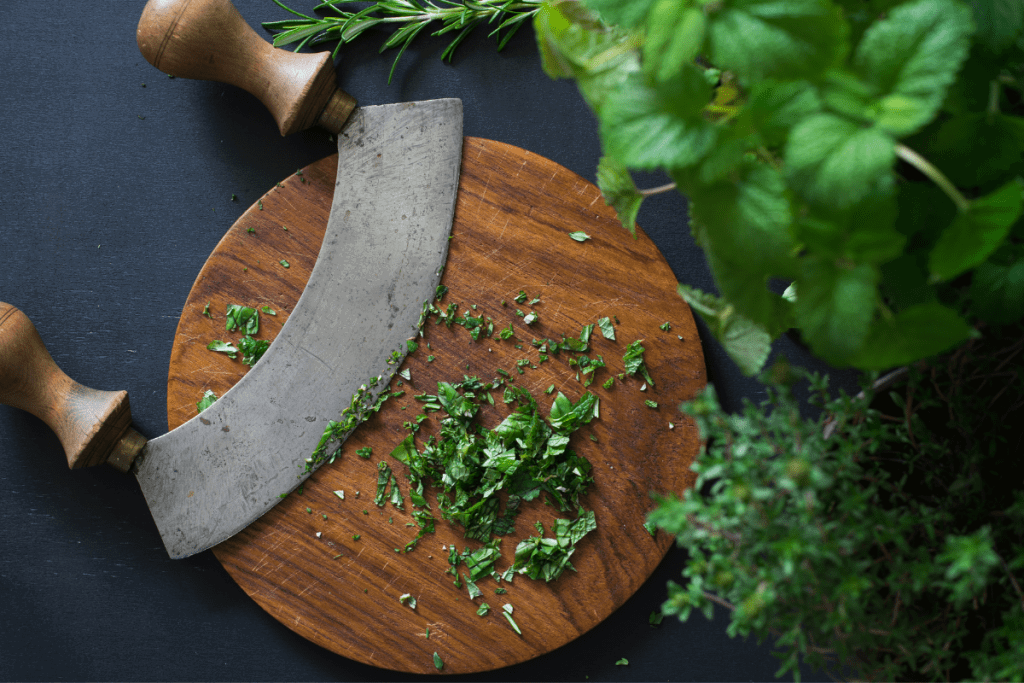
Mezzaluna
Italy’s “half moon” knife is the hand-powered alternative to a food processor. The rocking blade allows you to quickly and effortlessly mince herbs, garlic, onions, and other vegetables. Bonus: a mezzaluna will also double as a pizza cutter!
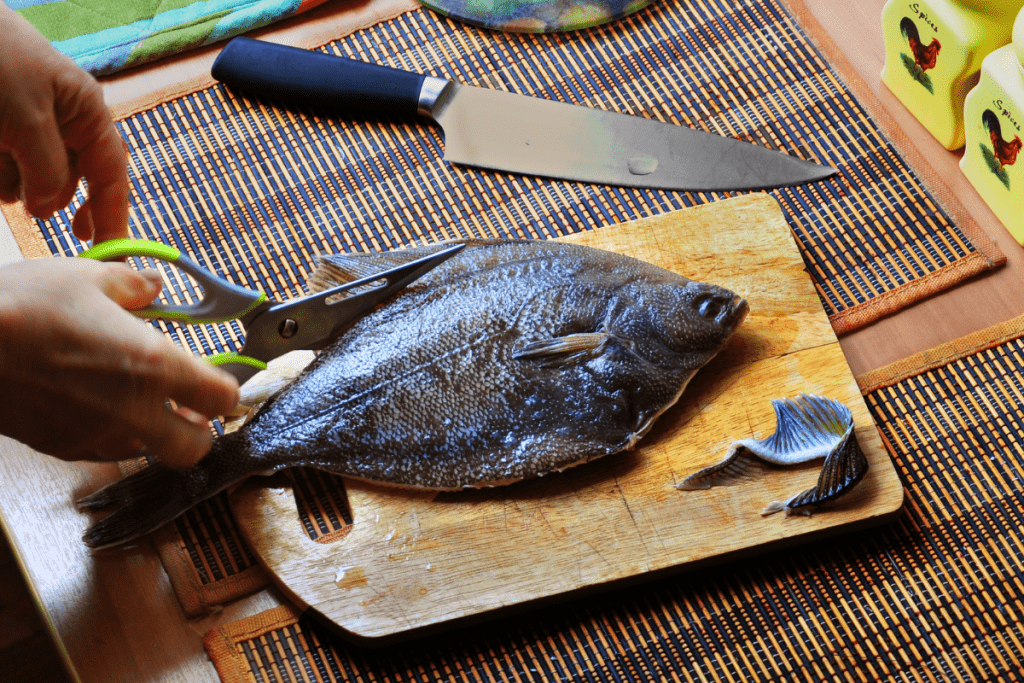
Kitchen Shears
Not one knife, but two — joined together with handles, no less. Kitchen shears are the easiest way to open packaging, yes, but they also work wonderfully for chopping herbs and salad greens. Intrepid home cooks can also use them to break down whole chickens.
Best Knife Brands That Matter
When you’re shopping for kitchen knives, looks can be as deceiving as fancy marketing pitches. That’s why I always recommend buying from trusted brands. The best knife brands, listed here, are known for their commitment to quality, durability, and attention to detail.
Wusthof
Family-run for over 200 years, Wusthof still produces all of their knives in Solingen, Germany’s “city of blades.” Across all eight of their knife lines, their attention to detail and commitment to traditional craftsmanship is impeccable. Their Classic Series knives are legendary for their longevity and are often passed down from one generation to the next.
Shun
Shun has quickly become the face of Japanese knives in America, thanks to their wide availability in home goods stores. Even with this wide distribution, they’ve kept to their tradition of making thin, lightweight, and ultra-sharp blades. They’re often our first recommendation for newcomers to Japanese knives.
Zwilling JA Henckels
German stalwart Zwilling Henckels is one of the longest-running kitchen knife makers in the world, with their trademark registered way back in 1731. Today, they carry on their traditional Western-style knife making with the assistance of modern testing technologies. You can be sure that every Zwilling knife will be consistent in its quality and attention to detail.
Miyabi
The Japanese knife-making imprint of Zwilling JA Henckels, Miyabi specializes in combining German and Japanese craftsmanship. Their top-quality Japanese steel blades are thoughtfully complemented with more Western design elements, such as heavier bolsters and ergonomically molded handles.
Victorinox
Though best known as the producer of the original Swiss Army Knife, Victorinox produces an impressive range of affordable cutlery options as well. They offer an excellent range of mid-priced knives, and their Fibrox 8 inch chef’s knife is the choice of many budding professional chefs.
Mercer Culinary
When restaurants are looking to outfit their kitchens with sharp, durable, affordable knives, they often turn to Mercer Culinary. Their knives are almost strangely affordable for the performance they offer, making them a fantastic choice for home chefs on a tight budget.
Dalstrong
Knife making upstart Dalstrong is trying to shake up the world of kitchen knives. They use the same top quality German and Japanese steels as their competitors, and many of the same design elements of traditional knife styles. But by producing their knives in China, they’re able to offer excellent quality knives at a much lower price.
Kamikoto
Kamikoto is descended from sword makers in Honshu, Japan’s largest island. There, they’ve been sticking with the traditional forging methods, including the use of Niigata steel for all of their knives. Each blade is put through a 19-step crafting process, ensuring that every knife is of the utmost quality.



